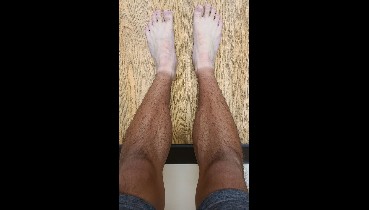

Deal Castle and Its Unconventional Shape
While the United Kingdom is home to many castles and fortresses, Deal Castle, located in Kent, is a unique one among them. Built by Henry VIII in the mid-16th century, the castle is famous for its unconventional design and shape. The castle consists of circular inner and outer bastions on top of each other, approximately of the same size. Aside from its shape, the castle was also one of the first attempts by the English to get in on the new artillery race. Until the 20th century, Deal Castle was in use as a defensive fort; however, in the aftermath of World War 2, it turned into a museum. Today, the castle is open to visit and is one of the most historical sights belonging to the Tudor Era.

The construction of Deal Castle goes back to the infamous antics of Henry VIII. When Henry wanted to get a divorce but the Pope did not allow it, he broke away from the Catholic Church. While this resulted in the formation of the Anglican Church, it also greatly angered the Pope. After this event, the Holy Roman Empire and the French made an alliance against the English under the banner of the Catholic Church. As a result, Henry VIII became afraid of an inevitable invasion from the sea; so, he started to build what historians call Device Forts or Henrician castles. These castles were specifically built near strategic seaside positions in order to thwart any invasion attempt.

Some historians believe that the shape of Deal Castle is not all about practicality. The shape of the castle is pretty similar to the Tudor Rose which is the emblem of the House of Tudor. The Tudor Rose is the symbol of the unification of the House of York and the House of Lancaster. While the inner pedals present the Yorks, the outer pedals represent the Lancasters.

One of these Device Forts was Deal Castle in Kent. The castle consisted of circular bastions which were 26 meters tall and 5 meters thick. Moreover, it also had dozens of artillery firing positions, gunloops, and four different levels of artillery. As different threats appeared, the firepower of the castle increased as well. Deal Castle defended the coasts of the UK from a French invasion, also during the Napoleonic wars, and against the Dutch too.





Recommended Videos
 Potential Contenders For The World’s Ugliest Dress Ideas195 views
Potential Contenders For The World’s Ugliest Dress Ideas195 views Woman Lost Her Engagement Ring While Gardening Finds It Years Later Around A Carrot475 views
Woman Lost Her Engagement Ring While Gardening Finds It Years Later Around A Carrot475 views-
Advertisements
 Nature’s Magical Little Moments By Austrian Photographer906 views
Nature’s Magical Little Moments By Austrian Photographer906 views The Truth Behind The Epic Photo Of A Frog Swallowing A Snake187 views
The Truth Behind The Epic Photo Of A Frog Swallowing A Snake187 views Meet Wilson’s Bird Of Paradise And See How This Stunning Bird Amaze You With Its Impressive Coat57 views
Meet Wilson’s Bird Of Paradise And See How This Stunning Bird Amaze You With Its Impressive Coat57 views Photographer Captured Deer Enjoying Cherry Blossoms In An Empty Park In Nara, Japan75 views
Photographer Captured Deer Enjoying Cherry Blossoms In An Empty Park In Nara, Japan75 views Californian Teens Discover Two New Scorpion Species and Are Not Planning to Stop There232 views
Californian Teens Discover Two New Scorpion Species and Are Not Planning to Stop There232 views 25 Examples Of The Absurd Levels Some People Go To With Image Editing Tools1354 views
25 Examples Of The Absurd Levels Some People Go To With Image Editing Tools1354 views
You may also like
 Pink Rosefinches: Beautiful Bird With A Beautiful Colour
Pink Rosefinches: Beautiful Bird With A Beautiful Colour  Elliot's Pheasant (Syrmaticus ellioti) — also called the Chinese Bar-Backed Pheasant or Barred-Back Pheasant
Elliot's Pheasant (Syrmaticus ellioti) — also called the Chinese Bar-Backed Pheasant or Barred-Back Pheasant  25 Hilarious Sunbathing Fails That Will Make You Think Twice About Skipping Sunscreen
25 Hilarious Sunbathing Fails That Will Make You Think Twice About Skipping Sunscreen  Crazy Winter Photos From Russia
Crazy Winter Photos From Russia